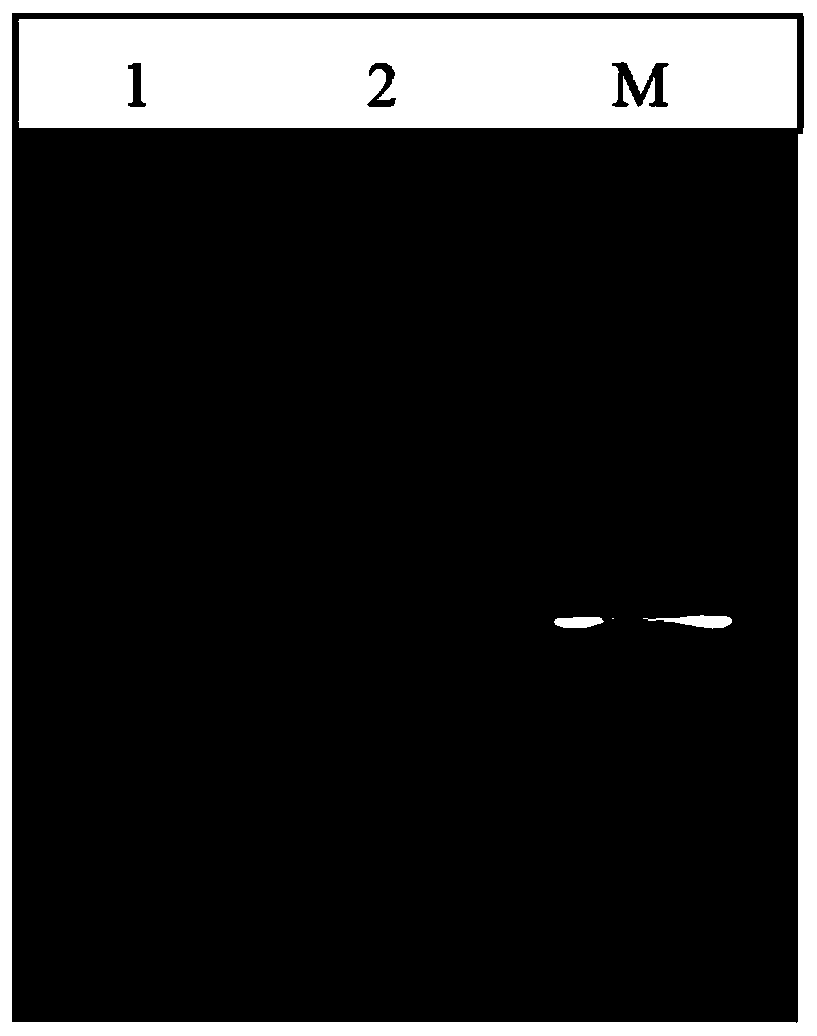Water environment DNA collection and preservation card and preparation method thereof
A technology for preserving card and water environment, which is applied in the direction of biochemical equipment and methods, microbial measurement/inspection, etc. It can solve the problems of high storage and transportation conditions, limited storage time, and increased costs, so as to avoid high costs, The effect of long storage time and cost saving
- Summary
- Abstract
- Description
- Claims
- Application Information
AI Technical Summary
Problems solved by technology
Method used
Image
Examples
Embodiment 1
[0024] Example 1: Preparation of DNA collection and preservation card in water environment 1
[0025] 1) Dissolve 3g Tris alkali and 3.72g EDTANa with 300ml deionized water 2 ﹒ H 2 0, 25g SDS, 118g guanidine isothiocyanate, 1.9mg thiourea, 1% NP40 and 4.383g NaCl, adjust the pH to 8.0 with concentrated hydrochloric acid, add deionized water to make the volume up to 500ml;
[0026] 2) Cut a certain size of nitrocellulose membrane with a thickness of about 0.3mm and put it into a certain volume of the above solution (according to 50μL solution / cm 2 The ratio of adsorbent material), placed in a closed container to prevent external DNA contamination, shake at 100rpm for 30 minutes, until the solution is completely absorbed.
[0027] 3) Carefully take out the card that has absorbed the salt solution, bake it at 80°C for 1 hour, and dry it sufficiently.
Embodiment 2
[0028] Example 2: Making a DNA collection and preservation card for water environment 2
[0029] 1) Dissolve 3g Tris alkali and 1.86g EDTANa in 300ml deionized water 2 ﹒ H 2 0, 10g SDS, 59g guanidine isothiocyanate, 0.95mg thiourea, 1% NP40 and 2.191g NaCl, adjust the pH to 8.0 with concentrated hydrochloric acid, and add deionized water to make the volume up to 500ml;
[0030] 2) Cut a certain size of nitrocellulose membrane with a thickness of about 0.3mm and put it into a certain volume of the above solution (according to 50μL solution / cm 2 The ratio of adsorbent material), placed in a closed container to prevent external DNA contamination, shake at 100rpm for 30 minutes, until the solution is completely absorbed.
[0031] 3) Carefully take out the card that has absorbed the salt solution, bake it at 80°C for 1 hour, and dry it sufficiently.
Embodiment 3
[0032] Example 3: Using DNA collection and preservation card to collect environmental samples
[0033] 1) Dissolve 3g Tris alkali and 3.72g EDTANa with 300ml deionized water 2 ﹒ H 2 0, 25g SDS, 118g guanidine isothiocyanate, 1.9mg thiourea, 1% NP40 and 4.383g NaCl, adjust the pH to 8.0 with concentrated hydrochloric acid, add deionized water to make the volume up to 500ml;
[0034] 2) Take 1L of water sample, filter with a filter membrane, collect 50-100mg of sediment on the filter membrane, add 50-100μL of the above solution, invert it up and down vigorously to mix it well, draw 50μL of lysate and add it carefully to Collect DNA on a sample card (approximately 2.5cm×2.5cm size card), spread it evenly, cover the entire card, and dry. Or pour the well-mixed lysate into a clean petri dish, and invade the DNA storage card with the size of 2.5cm×2.5cm into it, and then fully and uniformly adsorb the DNA of the sample in the water environment for a period of time and dry it.
[0035] 3)...
PUM
 Login to View More
Login to View More Abstract
Description
Claims
Application Information
 Login to View More
Login to View More - R&D
- Intellectual Property
- Life Sciences
- Materials
- Tech Scout
- Unparalleled Data Quality
- Higher Quality Content
- 60% Fewer Hallucinations
Browse by: Latest US Patents, China's latest patents, Technical Efficacy Thesaurus, Application Domain, Technology Topic, Popular Technical Reports.
© 2025 PatSnap. All rights reserved.Legal|Privacy policy|Modern Slavery Act Transparency Statement|Sitemap|About US| Contact US: help@patsnap.com

